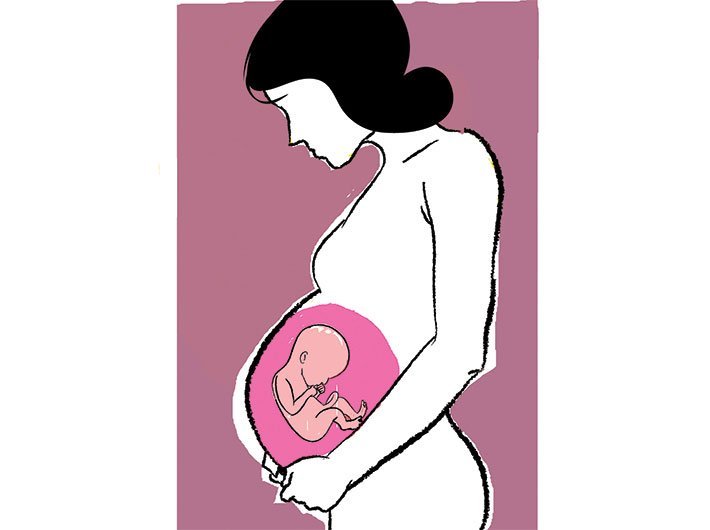It is imperative that public administration should improve maternal death reporting via health management systems and civil registration systems (CRS), says ORF article
Demonetisation proved that we keep a good account of our money but apparently we lack expertise and motivation in counting maternal deaths, most of which are entirely preventable. Regular and comprehensive data on maternal deaths disaggregated by place of residence, caste, class and religion can help to comprehend the varied dimensions of the problem, wrote William Joe in an article hosted on the Observer Research Foundation (ORF) website.
It is imperative that the public administration should improve maternal death reporting via health management systems and civil registration systems (CRS). Though the CRS is reasonably good in Goa and Punjab but it is severely challenged in UP, Uttarakhand and Manipur.
The article “Risking life for life: Maternal deaths in poll bound states” said that given the magnitude of the problem, the international and national organizations are rightly concerned about achieving faster reductions in maternal mortality.
In this regard, the prime minister’s recent commitment to launch a financial assistance scheme for mothers further increases the relevance of safe motherhood as a policy objective. However, our state health systems currently follow a uniform operational strategy to improve maternal and child health and which is fundamentally an extension of National Health Mission umbrella. Though from the perspective of central government it makes sense to provide a broad framework but instead of turning the centre’s approach into a one-size-fits-all label, the states should adopt a spirit of innovation to devise context specific policies to achieve SDGs in health.
Joe, who is assistant professor, Institute of Economic Growth, Delhi, wrote that the burden of maternal deaths is usually reported as maternal mortality ratio (MMR) defined as the number of maternal deaths per 100,000 live births. United Nations expert group estimates that in 2015, India had a MMR of 174 implying that each year 45,000 women die due to causes related to or aggravated by the pregnancy or its management. After Nigeria, India is the second largest contributor to global burden of maternal deaths accounting for 15% of the total 303,000 maternal deaths worldwide.
According to the latest round of Annual Health Survey, during 2012-13,Uttar Pradesh (UP) and Uttarakhand had an MMR of 258 and 165, respectively whereas Punjab had an MMR of 141. With over 14,500 maternal deaths, UP alone accounts for one-third of the total maternal deaths in India. Punjab and Uttarakhand contribute to over 600 and 300 maternal deaths, respectively. We do not have official numbers for Goa and Manipur. However, a Goa Medical College study suggests Goa’s MMR to be in the range of 90 which translates into 21 maternal deaths each year.
The article went on to say that institutional care in the presence of skilled birth attendants is a prerequisite for ensuring rapid reductions in maternal mortality. There are pockets in UP, Uttarakhand and Manipur with high home-based births. Reports show that UP and Uttarakhand have 42% and 41% home-based births, respectively. Hilly districts of Chamoli, Bageshwar, Rudraprayag and Tehri Garhwal have over 50% home-based births. In this regard, Manipur’s profile is similar to Uttarakhand but Punjab and Goa are better-off because of favourable social, economic and health system related factors.
With advances in scientific knowledge and proven clinical interventions, it is possible to prevent most of the maternal deaths.
Economic growth, high public health expenditure and improvements in female literacy can go a long way in reducing such eventualities. Chronic poverty and undernutrition are often the fundamental causes of maternal death. All these are inter-linked factors that partly showcases our economic capabilities but in part reflects social attitude towards gender equity and empowerment.
Joe wrote that two major initiatives under the National Health Mission (NHM) – Janani Suraksha Yojana and Janani Shishu Suraksha Karyakram – directly aim to incentivize beneficiaries to avail delivery care services at health facilities. There is also a rich bouquet of best practices from other Indian states that can be adopted by poll bound states, particularly UP, Uttarakhand and Manipur. For instance, Gujarat has worked with the private sector under the Chiranjeevi Yojana to improve levels of institutional delivery. Rajasthan provides free drugs and diagnostics service to all.
Tamil Nadu has several unique features such as streamlined health administration with effective public health cadre, robust maternal mortality surveillance system, well-planned emergency care transport services, good public procurement of drugs and supplies. Dr. Muthulakshmi Reddy Maternity Benefit Scheme in Tamil Nadu provides a conditional cash benefit of Rs.12,000 to each beneficiary women for uptake of antenatal care, institutional delivery, and child immunization. In this context, the prime minister’s decision to introduce a nation-wide scheme for financial assistance of Rs. 6000 to pregnant women is expected to help reduce maternal mortality in a big way. Clearly, this has budgetary implications but with effective planning these poll bound states can emerge as a role model in provisioning of good health at low cost.
